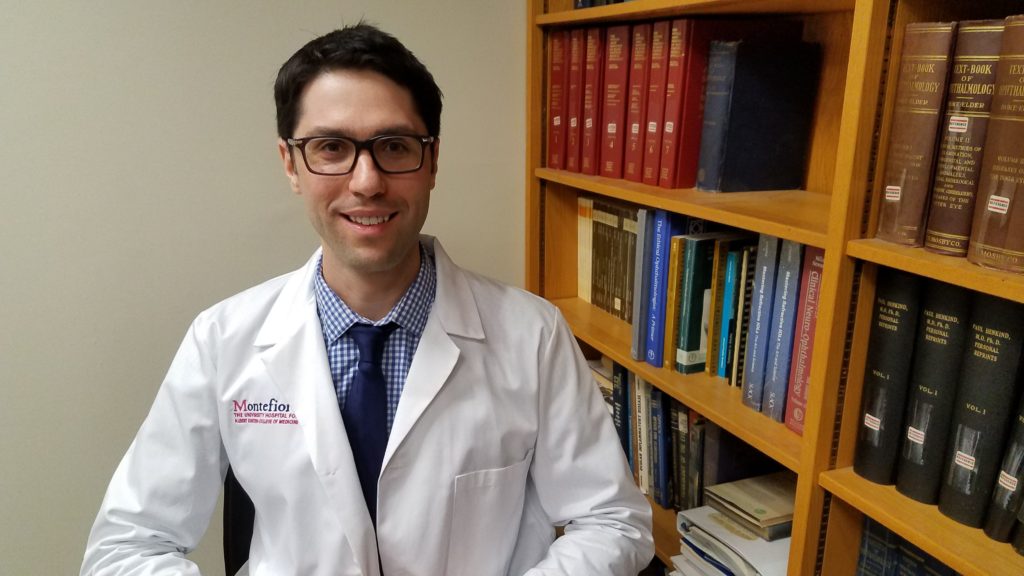
Dr. Gabriel Rand – ARVO 2019
According to new research presented this week at the 2019 Annual Meeting of the Association for Research in Vision and Ophthalmology (ARVO) in Vancouver, several potential risk factors, including donor diabetes mellitus, can lead to damage during Descemet Membrane Endothelial Keratoplasty processing.
There are limited studies identifying risk factors for damage when processing Descemet Membrane Endothelial Keratoplasty (DMEK), which has a high processing failure rate as compared to Descemet Stripping Automated Endothelial Keratoplasty (DSAEK). Through a study with lead researcher Gabriel Rand, MD, second year ophthalmology resident at Montefiore Medical Center and the Albert Einstein College of Medicine Department of Ophthalmology and Visual Sciences and Saving Sight, an analysis of potential risk factors was performed. Collaborative research partner, Saving Sight performs a high volume of DMEK processing.
Through the study, a retrospective analysis was completed with logistic regressions on all 385 DMEK tissues processed from 319 eligible donors at Saving Sight from July 2014 to June 2017. The study concluded that eye bank DMEK processing has significant rates of damage and risk factors for processing failure including donor diabetes mellitus, individual technician ability and the technician learning curve.
“Myself, Dr. Chuck and a bunch of us here at Montefiore have been working with Saving Sight to prepare an abstract for ARVO this year,” said Dr. Rand. “The topic of the abstract is the effect that donor diabetes status has on the corneal transplant quality. This is a really important subject because diabetes is a disease that is increasing in prevalence every year and it’s a multisystem disease – it affects every single part of the body, the cornea notwithstanding. There’s really not a tremendous amount of literature on what the potential influences that donor diabetes status has on these cornea transplant tissues. So what our contribution is, is to add to the fund of knowledge and to really examine does a donor diabetes status affect endothelial cell health, does it affect preparation failure rates, things like this, so it’s been a really exciting research project for us.”
Saving Sight Chief Business Development Officer Patrick Gore, RN, CEBT, Director of Business Development Lynn Forest-Smith, and Chief Operating Officer Tina Livesay were co-authors on the study. As an eye bank that facilitates eye donation for transplant and research, the Saving Sight team is proud to support this project and to work in collaboration with Montefiore and Drs. Rand and Chuck.
“It is a privilege for me to work with such a devoted team at Montefiore who want to advance the science of ophthalmology,” said Lynn Forest-Smith, Director of Business Development at Saving Sight. “I have a real passion for the work we do at Saving Sight and teaming up with these folks allows us to take our findings back to the eye banks, apply what we learn to improve our services and ultimately, help more people see.”
This collaborative study helps advance the fields of corneal transplantation and ophthalmology between eye banks, medical centers and researchers and helps identify factors that contribute to better grafts and better outcomes for patients.
Abstract:
Factors associated with eye bank descemet membrane endothelial keratoplasty processing damage
Authors: Gabriel M. Rand MD, Patrick K. Gore RN CEBT, Lynn Forest-Smith CEBT, Tina Livesay CEBT, Roy S. Chuck MD PhD
Research Findings - ARVO 2019
Gabriel Rand, MD, second-year Ophthalmology resident at Montefiore Medical Center, gives an overview of his recent research collaboration with Saving Sight for ARVO 2019

